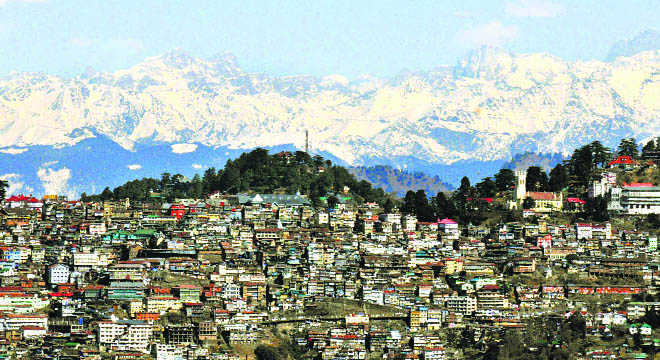25,000 illegal structures in Himachal cry out for comprehensive solution
Shimla, May 15
Illegal multi-storied structures, both commercial and residential, rose in earthquake-sensitive Himachal Pradesh with what was alleged to be political connivance.
Successive Congress and BJP governments in the state refused to act against illegal constructions and in fact brought in six retention policies to regularise them till the state high court, last year, set aside a law to regularise illegal constructions.
The issue again came into the limelight when the Supreme Court ordered demolition of 13 illegal constructions in hotels and resorts in the picturesque Kasauli hills and a violator allegedly shot down a woman town planner during the demolition drive on May 1.
Official sources told IANS that there are over 25,000 unauthorised structures in the state, mainly dotted across this capital town, once known as the Queen of Hills. These comprise over 2,500 hotels, including high-end resorts.
The state governments had brought the retention or regularisation policy on six occasions that enabled thousands of illegal residential structures to come within the legal framework, an official told IANS, requesting anonymity as he was not authorised to speak to the media.
"Cases should be filed against the officials who helped the land encroachers and unauthorised construction mafia flourish in the state over the years," 71-year-old Desh Bandhu Sood, a third generation resident who was born and brought up in Shimla, told IANS.
High-level officials and politicians were involved in the mushrooming of illegal structures which have been coming up for several years.
"It's simply a nexus among the corrupt politicians, builders and bureaucrats," Sood added.
In the state capital, a large number of buildings are in danger of collapsing like a pack of cards even with a moderate intensity temblor that can be catastrophic for congested settlements like Sanjauli, Hira Nagar and Ladakhi Mohalla, which could take a heavy toll on human lives.
HN Kashyap, a former Shimla Municipal Corporation commissioner, blamed the government for its failure to formulate Shimla's development plan, the city covered under the central government's Atal Mission for Rejuvenation and Urban Transformation (AMRUT).
"There are massive building violations in the new merged areas of Shimla. In the New Shimla area, initially two-and-a-half floors were allowed in a residential building. When there was a reality boom, residents and builders were allowed to raise two more floors," he said.
Kashyap said the successive governments kept on amending the existing Interim Development Plan prepared for Shimla planning area in 1979 just for political gains and were least bothered to set in place a scientific development plan.
Upset over the populist policies, Dev Sharma, who is settled in this town for over six decades, said: "Shimla is not a worthy place to live now. Almost in the blink of an eye, one can get buried under a mountain of debris of these structurally unsafe buildings if an earthquake of even moderate intensity hits the region." Officials fear that a high-intensity quake can turn Shimla town into a tomb of rubble as it falls in seismic zone IV-V, suggesting severest seismic sensitivity.
Planned for a maximum population of 16,000, Shimla now supports 236,000 people, as per the provisional figures of the 2011 census.
Acting tough, the Supreme Court, where a case of illegal constructions in Kasauli is still pending, on May 9 asked the state government to provide a list of officials under whose nose unauthorised constructions came up.
"Unless you take action and remove four-five people from service, nothing will fall in line," a bench of Justices Madan B. Lokur and Deepak Gupta observed, asking the state to file a status report while posting the matter for hearing in August.
Earlier, a division bench of the state High Court on December 22 last year set aside the legislation brought by the previous Congress government, enabling legalisation of unauthorised structures.
A bill for legalising the illegal constructions was passed unanimously in the assembly in September 2016.
In a performance audit last year, the Comptroller and Auditor General (CAG) noted that nearly 90 per cent of buildings, mainly houses, in rural areas of the state did not follow safe construction rules.
In Shimla alone, 83 per cent out of a sample of 300 selected buildings are highly vulnerable to collapse if there is a major earthquake.
Construction of houses in urban areas is regulated by the provisions of the Town and Country Planning Act, the Municipal Corporation Act and local bodies' regulations and building by-laws.
However, construction of buildings and houses in rural areas (89 percent of total houses) is not regulated by any act or regulation.
Construction of seismic-resistant buildings in rural areas has, thus, not been ensured as of June 2016, the CAG observed.
Himachal Pradesh is prone to various types of disasters.
It's a tragedy that death of two officials who were performing their duty has shaken up the government and the courts. But the urgency of the situation demands a comprehensive solution for the whole state. IANS









